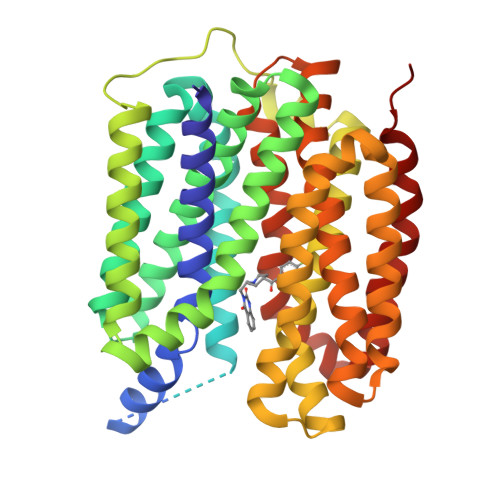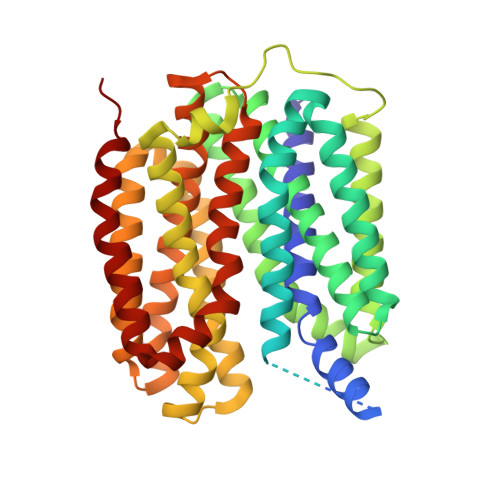Transport and inhibition mechanisms of human VMAT2.
Wu, D., Chen, Q., Yu, Z., Huang, B., Zhao, J., Wang, Y., Su, J., Zhou, F., Yan, R., Li, N., Zhao, Y., Jiang, D.(2024) Nature 626: 427-434
- PubMed: 38081299
- DOI: https://doi.org/10.1038/s41586-023-06926-4
- Primary Citation of Related Structures:
8JSW, 8JT9, 8JTA, 8JTC - PubMed Abstract:
Vesicular monoamine transporter 2 (VMAT2) accumulates monoamines in presynaptic vesicles for storage and exocytotic release, and has a vital role in monoaminergic neurotransmission 1-3 . Dysfunction of monoaminergic systems causes many neurological and psychiatric disorders, including Parkinson's disease, hyperkinetic movement disorders and depression 4-6 . Suppressing VMAT2 with reserpine and tetrabenazine alleviates symptoms of hypertension and Huntington's disease 7,8 , respectively. Here we describe cryo-electron microscopy structures of human VMAT2 complexed with serotonin and three clinical drugs at 3.5-2.8 Å, demonstrating the structural basis for transport and inhibition. Reserpine and ketanserin occupy the substrate-binding pocket and lock VMAT2 in cytoplasm-facing and lumen-facing states, respectively, whereas tetrabenazine binds in a VMAT2-specific pocket and traps VMAT2 in an occluded state. The structures in three distinct states also reveal the structural basis of the VMAT2 transport cycle. Our study establishes a structural foundation for the mechanistic understanding of substrate recognition, transport, drug inhibition and pharmacology of VMAT2 while shedding light on the rational design of potential therapeutic agents.
Organizational Affiliation:
Laboratory of Soft Matter Physics, Institute of Physics, Chinese Academy of Sciences, Beijing, China.

















